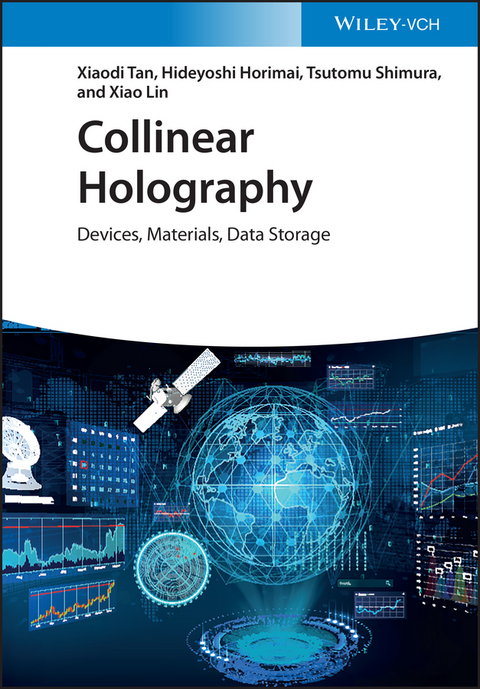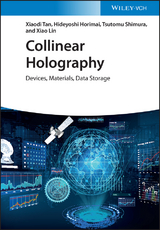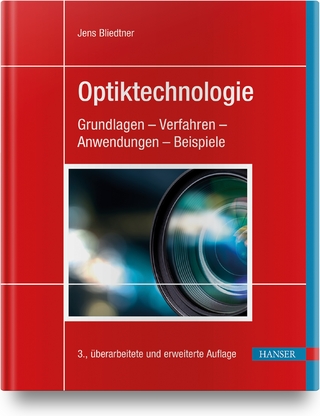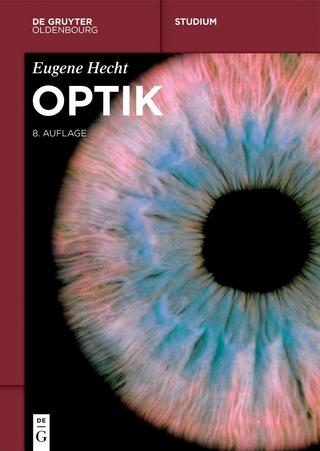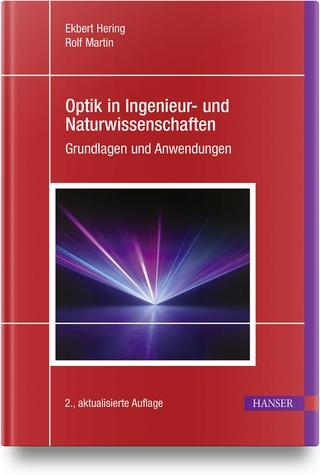Collinear Holography
Wiley-VCH (Verlag)
978-3-527-41363-8 (ISBN)
Xiaodi Tan is Professor in the School of Optoelectronics at Beijing Institute of Technology, China. He obtained his PhD in Applied Physics from The University of Tokyo, Japan. Before joining Beijing Institute of Technology, he worked as a Senior Engineer in the Technology Division of OPTWARE Corporation, Japan, researching and developing the next generation of optical storage systems, and then worked as a Senior Technology Analyst, Distinguished Engineer and Optical Technology Manager of Core Device Development Group in Sony Corporation, Japan. His research interests are in information optics, including holographic storage, optical information display and optical devices. Hideyoshi Horimai is President of HolyMine Corporation. He obtained his Master's degree at Toyohashi University of Technology, Japan. He worked for more than thirteen years on the latest technology developments in optical disc memories at SONY Corporation, and applied for more than 250 patents. He is an inventor of polarized collinear holography, a basis of realizing holographic memory to commercial products. In 1999, he founded OPTWARE Corporation and held the office of President until 2005. He is also visiting professor at Toyohashi University of Technology and a part-time teacher at Nara Institute of Science and Technology, Japan. Tsutomu Shimura is Professor in the Department of Fundamental Engineering at The University of Tokyo, Japan. After his PhD he became a faculty member in the Institute of Industrial Science at The University of Tokyo. He also worked as a postdoctoral fellow at National Research Council, Canada. He has been working in the field of the photorefractive effects and the phase conjugate optics for long years. His current research interests focus on holographic data storage systems and their recording materials, spin wave optics, and plasmonics. Yawara Kaneko is Professor at Heisei Teikyo University, Japan. After his PhD in Engineering from Sophia University, Japan, he worked as a research and development engineer for several years at global companies, such as Hewlett Packard Laboratories Japan, Agilent Technologies, OPTWARE, and TechnoConsulting , Inc. He has expertise in semiconductor devices and optical instruments.
1. INTRODUCTION
1.1 Big data era
1.2 History of holographic data storage
1.3 Present problems
2. SYSTEM OF COLLINEAR HOLOGRAPHY
2.1 Polarized collinear holography
2.2 Principle of collinear holography
2.3 Collinear recording and reproduction characteristic evaluation device: S-VRD
2.4 B-VRD
2.5 HVD-ES1
2.6 SHOT-2000 (Standard Holographic Optical Tester for Collinear system)
3. THEORIES OF COLLINEAR HOLOGRAPHY
3.1 Analysis of a Collinear Holographic Storage System: Introduction of Pixel Spread Function
3.2 Theoretical treatment of the collinear system and formulate numerical evaluation technique based on the scalar diffraction theory
3.3 Orthogonal reference patterns multiplexing for collinear holographic data storage
3.4 Simulation of interference fringes formed by collinear method
4. KEY DEVICES AND COMPONENTS
4.1 Laser
4.2 DMD
4.3 CMOS
4.4 Servo Actuator
5. MATERIALS
5.1 Holographic media for commercial uses
5.2 Holographic Photopolymer Materials
5.3 PQ/PMMA
6. DATA FORMAT
6.1 3:16 Modulation
6.2 Sync Format
6.3 Reference pattern
6.4 Phase modulation
6.5 Low-Density Parity-Check Code
6.6 Disc Format
7. CHARACTERISTICS OF WRITE AND READ
7.1 Introduction
7.2 Shift selectivity
7.3 Parameters
7.4 Symbol error
7.5 Numerical simulation analysis of collinear shift selectivity
7.6 Summary
8. SYSTEM MARGIN OF a Collinear Holographic Data Storage
System
8.1 Defocus margin
8.2 Detrack Margin
8.3 Image plane margins
8.4 Tilt margin
8.5 Wavelength margin
8.6 Temperature compensation condition for collinear holographic data storage
8.7 Noise Margin
9. APPLICATIONS
9.1 High-speed optical correlation system based on collinear holography
9.2 3D Holographic printer
9.3 Encryption
| Erscheinungsdatum | 15.08.2019 |
|---|---|
| Verlagsort | Weinheim |
| Sprache | englisch |
| Maße | 170 x 244 mm |
| Gewicht | 712 g |
| Themenwelt | Naturwissenschaften ► Physik / Astronomie ► Optik |
| Technik ► Elektrotechnik / Energietechnik | |
| Technik ► Maschinenbau | |
| Schlagworte | Electrical & Electronics Engineering • Elektrotechnik u. Elektronik • Holographie • Materials Science • Materialwissenschaften • Optical and Non-Linear Optical Materials • Optics & Photonics • Optik • Optik u. Photonik • Optische u. Nichtlineare Optische Materialien • Photonics & Lasers • Photonik • Photonik u. Laser • Physics • Physik |
| ISBN-10 | 3-527-41363-4 / 3527413634 |
| ISBN-13 | 978-3-527-41363-8 / 9783527413638 |
| Zustand | Neuware |
| Haben Sie eine Frage zum Produkt? |
aus dem Bereich
